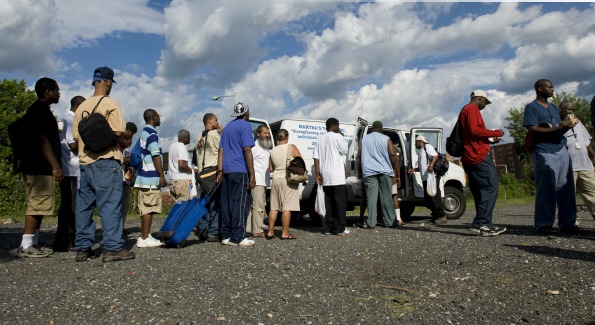President Lindsey Buss and his team work to break the poverty cycle.
By Kinne Chapin
You can learn a lot about a city from its charitable organizations. For instance, the vast number of charities and non-profits in Washington, D.C. is indicative of the city’s character — the capital is full of people who want to make a difference in the lives of those around them. Martha’s Table, an organization dedicated to breaking the cycle of poverty, embodies one of Washington’s other defining characteristics: innovation.
While many non-profits devote their time and resources to one cause, Martha’s Table aims to provide clothing, education, and food to at-risk children, families, and individuals in order to comprehensively meet their needs. I sat down with the president of Martha’s Table, Lindsey Buss, who explained that the community’s changing needs inspire the organization’s multi-faceted and continually evolving objectives.
Paying close attention to the community around them has inspired some of Martha’s Table’s most inventive decisions, such as expanding the hours of its after-school programs on school holidays, or developing a program that provides support to graduates of the Martha’s Table college prep program DC Degree by sending them care packages at their universities. The changes in the immediate community have even brought some unexpected clients — hipsters — into the Martha’s Outfitters Thrift Store.
Luckily for everyone involved with Martha’s Table, it doesn’t look like the innovation will stop anytime soon.
Quick Q&A with Lindsey Buss
Washington Life: What is the mission of Martha’s Table?
Lindsey Buss: Martha’s Table’s mission is to deal with the short term effects of poverty and to help people create long term solutions.
WL: How was Martha’s Table founded?
LB: Martha’s Table got started back in 1980 as a collaborative effort between a sociology professor at George Washington University and a Jesuit Priest at Gonzaga. It’s evolved and grown over the years and changed in response to community needs. Our main areas of programing are now food, hunger, nutrition, clothing, education programs, and family support services.
WL: How can people get involved?
LB: There are lots of different ways to get involved. We have lots of different types of volunteer opportunities and volunteers include corporate groups, youth groups, faith-based organizations, or even just families and individuals.
Another great way to get involved is to do a drive for us — food drives that we can use for our grocery program, clothing drives. If you’re interested, reach out and let us know you want to do it, and we can tell you what we’re most in need of. We also have a wish list on Amazon.com so people who want to make a targeted difference can easily see the things we need.
WL: What sets Martha’s Table apart from other Washington nonprofits?
LB: One of the things we are very proud of and very deliberate about is how much we collaborate with other nonprofits in D.C., and we very much view our work as having more of an impact when we are more involved with other organizations in the city. For example, we have about 200 other nonprofits that refer people here to get clothing, or to get food.
With our education programs, we have people coming in here to help us, whether it’s providing health screening for our kids or teaching them a special skill. We also have a lot of parent training sessions and some of those are taught from outside. So there’s a sense of collaboration that leads to all our organizations being more effective as we work together.
WL: Finish this sentence: “I want people in DC to know that…”
LB: [I want people to be aware] of all the things that we do. Someone who interacts with Martha’s Table might know that we have food programs, but they might not be aware that we have education programs for 250 kids ranging from 3 months to 22 years old. Or that we have a new program focused on helping our graduates when they’re in college. They might not know about our nationally accredited day care and after-school programs. They might not be aware that there’s a great place to go shopping, Martha’s Outfitters. That’s the thing that I’d most like people to know.








